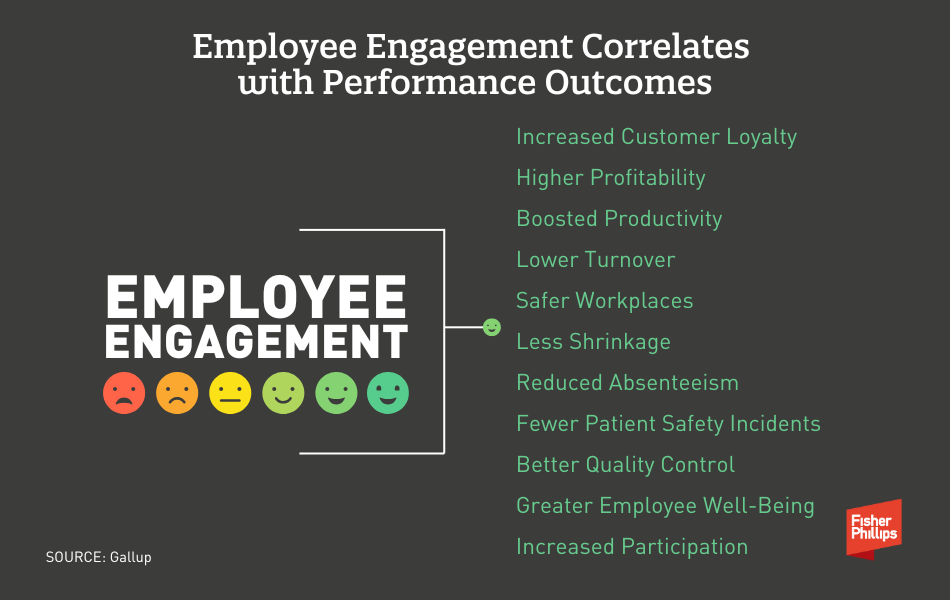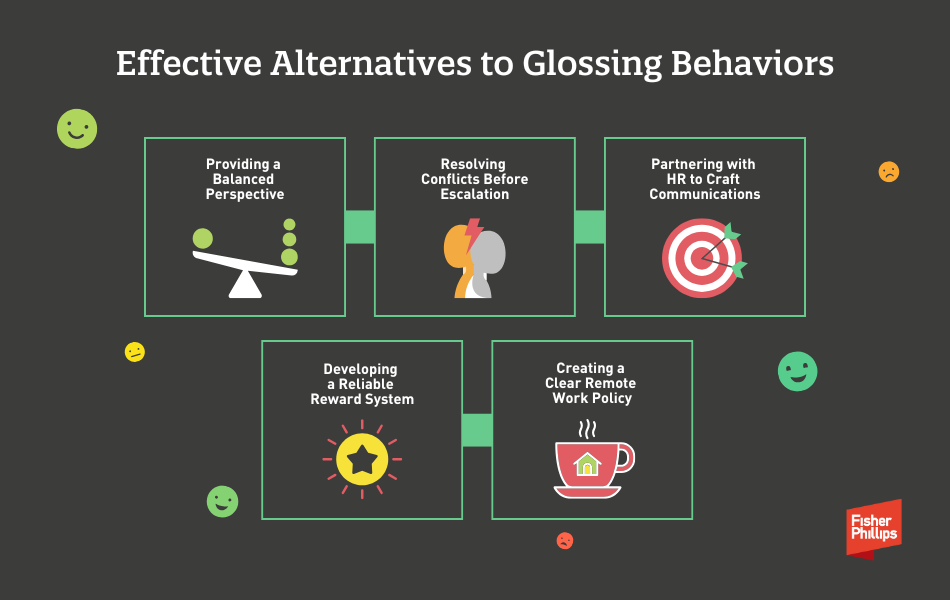We all tend to thrive in a positive work environment that provides support, encouragement, and tools for success – but what happens if a workplace is too positive? Are your managers glossing over glaring issues that need to be addressed? Are your employees feeling disheartened due to a lack of honest feedback? Your leadership team may be guilty of “glossing” or creating toxic positivity by downplaying problems and failing to resolve issues. While your leaders may have good intentions, this management style may come across as superficial and insincere, particularly in a time when employees are seeking transparency more than ever. So, what can you do to prevent glossing in your organization? Here are five management behaviors to drop and five effective alternatives to help you eliminate this latest workplace fail.
Why Does It Matter?
First, let’s talk about the impact of glossing on your workplace. Employee engagement is important for worker well-being, retention, productivity, and your organization’s bottom line. Indeed, Gallup’s extensive research over the years shows a strong correlation between employee engagement and these 11 performance outcomes:
- Increased Customer Loyalty
- Higher Profitability
- Boosted Productivity
- Lower Turnover
- Safer Workplaces
- Less Shrinkage
- Reduced Absenteeism
- Fewer Patient Safety Incidents
- Better Quality Control
- Greater Employee Well-Being

Despite its importance, employee engagement reached its lowest point in a decade in 2024, with only 30% of U.S. workers reporting being engaged and 17% saying they were actively disengaged.
Notably, workers who could do their jobs remotely but are exclusively onsite and those who are exclusively remote workers had the most significant drops in engagement, in addition to workers under age 35.
The good news is that being proactive, eliminating toxic behaviors like glossing, and building a culture of transparency can go a long way toward improving employee engagement.
How might your leaders be guilty of glossing? What should they be doing instead? Read on for the top five toxic behaviors to drop and five effective alternatives.
1. Toxic Behavior: Shielding Employees from Critical Business Issues
It’s natural to prefer focusing on the ways business is thriving to keep employees motivated and excited about the future, but ignoring bigger picture problems within the organization can lead to more issues down the road. Although some sensitive information may need to be kept confidential, employee engagement can plummet when workers feel like they’re being kept in the dark.
2. Toxic Behavior: Ignoring Unhealthy Team Dynamics
Sometimes personalities clash at work. You may be tempted to ignore daily bickering, gossiping, or complaining among teammates so long as the job is being done well. But even seemingly small disagreements can escalate if they’re not properly addressed. Moreover, unhealthy team dynamics could lead to turnover -- or even harassment claims.
3. Toxic Behavior: Failing to Address Performance Issues
Difficult conversations about performance issues, attendance problems, and other work-related shortcomings are uncomfortable for employees and managers alike. But glossing over these challenges won’t make them go away. Instead, ignoring performance problems could contribute to lower productivity, more mistakes, and higher turnover among employees who feel they need to fill in the gaps. Your high-performing team members who see the lower performers get away with substandard work could become disengaged if they believe that you don’t value their high-quality work. Moreover, it could make it harder to ultimately cut ties with an underperforming employee if you left the issues off performance appraisals and inflated their reviews.
4. Toxic Behavior: Making Empty Promises
In difficult times, managers may want to promise key employees raises, promotions, and other perks to keep them happy – but failing to follow through can deflate morale and cause employees to actively disengage or look for other employment.
5. Toxic Behavior: Ignoring Flaws in Your Remote and Hybrid Work Policies
Remote and hybrid work are here to stay – but they have raised a whole slate of new problems in some workplaces.
- Maybe you rushed to make remote work happen during the pandemic but never fine-tuned your policies.
- Perhaps your managers say they embrace remote and hybrid work, but your employees feel left out when they’re not together in person.
- Maybe you’ve called everyone back to the office, but the exceptions have swallowed the rule and your workplace looks like a ghost town most days.
Glossing over problems with your remote and hybrid policies can lead to disengagement fast, as the Gallup statistics above show.
